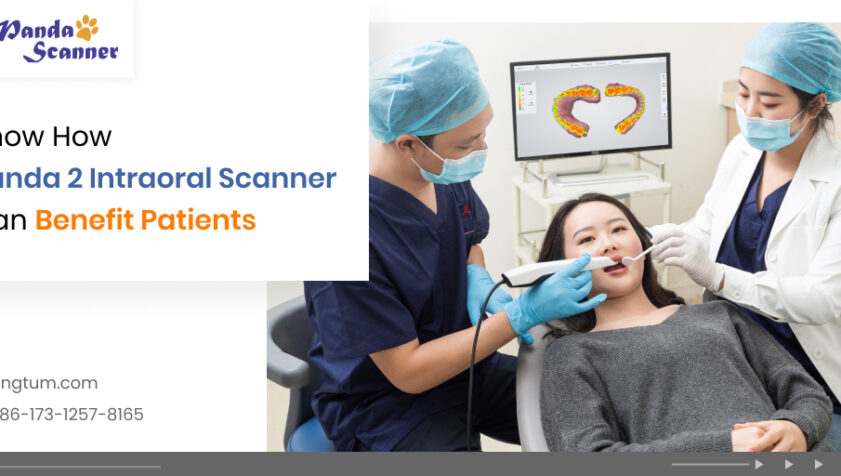Digital technology has entered each and every field, and has not left behind the field of dentistry as well. Therefore, today, dentistry has advanced unimaginably, and dental care has become smooth, and comfortable not only for doctors but also for patients. Dental and oral diagnosis and treatments have also become more streamlined, and faster. Devices that are incorporating intraoral imaging technology such as the Panda 2 intraoral scanners have changed the process of oral care forever. Let’s find out more about these scanners, and how they help patients in this blog.
What Are Intraoral Scanners?
Intraoral scanners are devices that help to obtain digital impressions of the patient’s teeth and mouth palate with the help of sensors. Now, in place of the moulds that are used in traditional dentistry, the scanners project light in the buccal cavity and then capture the images. Now, these images are then passed through scanning software to obtain a 3D model of the interior of the mouth. The China intraoral scanners have totally eliminated the need for impression materials like traditional plaster models and then ceramic restorations with the help of hands. This way, the process becomes easier for patients to undergo the treatment.
Imaging devices such as intraoral scanners can offer a slew of benefits to a dental clinic. These scanners when used with computer-aided design, and manufacturing (CAD/CAM) tools, can be used to make customised oral devices for the patient with great accuracy and comfort. CAD software performs digital analysis that is followed by CAM procedures that help to create accurately fitted materials used for crowns, aligners, and other dental restorations that have made the process extremely simple for dentists.

How Is It Beneficial For Patients?
There are many benefits that digital dental scanners offer such as the Panda 2 intraoral scanners offer such as comfortable treatment, precise restorations, and more. Let’s take a look at what are some of these benefits.
- Clear impressions taken by intraoral scanners imply that the restorations can be precise, and flawless. The intraoral scanners involve no messy steps used in the traditional process, and this is why mainly the restorations are correctly done.
- Now, the scanning process only takes 3 to 5 minutes to complete, which means that the chair time that is required is very less. Further, patients are not required to visit the dentist’s clinic multiple times, and no messy PVC material is required to be used. Plus, dentists have the scope to attend to more patients.
- Patients with very strong reflex gags generally tend to stay afraid of any dental treatments that require them to hold materials in their mouths for a while. And, for restorative dentistry, this is what the patients are required to do in the traditional treatment. This is where digital scanning devices such as the Panda 2 intraoral scanners can help. As the scanners can easily obtain the impressions with the help of alginate materials
- Patients can observe the entire scanning session of the side monitor, an option that is not available with the traditional impression system. So, the patients while watching the 3D scanning of their oral cavity can understand the condition, connect with the dentist’s recommendations, and find the process extremely reassuring. Further, they can engage in communication, and clear their doubts with dentists. Also, dentists can teach their patients good oral care.
- Intraoral scanners use laser lights to scan the mouth, therefore, the patients are not exposed to any harmful radiation, unlike the traditional x-ray procedure. Therefore, the process is safe for patients.
Conclusion
The intraoral scanner becoming common in the field of dentistry, as an increasing number of dentists, and patients are understanding its value. Whether for diagnosis of oral diseases, teeth restoration solutions, orthodontic treatment, prosthetic customization, and other requirements, digital scanning has become almost regular now. Therefore, intraoral scanners such as the Panda 2 intraoral scanners have not only helped to improve dental care, but also, have made the process enjoyable, and simple for both dentists, and their patients.






